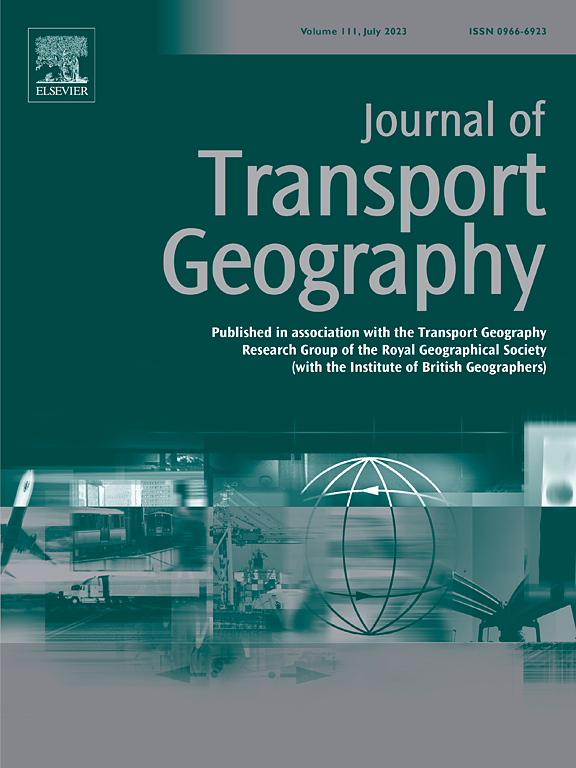Spatio-temporal heterogeneity in street illegal parking: A case study in New York
IF 6.3
2区 工程技术
Q1 ECONOMICS
引用次数: 0
Abstract
Illegal parking has a significant impact on urban traffic management and safety, posing a substantial hazard that contributes to disorder in public urban spaces. Therefore, a thorough analysis of the temporal and spatial characteristics of illegal parking is essential for the scientific planning of parking areas and the optimization of traffic resource allocation. However, existing studies often oversimplify factor interactions and fail to disentangle spatio-temporal heterogeneity, particularly in addressing zero-inflated data structures and nonlinear dependencies among variables such as crime rates and weather conditions. To this end, this study constructed a multi-spatiotemporal scale Bayesian hierarchical model that combines the Besag-York-Mollié (BYM) model with a zero-inflated Poisson distribution and uses the Integrated Nested Laplace Approximation (INLA) method for efficient posterior inference. In contrast to conventional approaches, this method not only improves interpretability but also precisely captures spatial-temporal dependencies, thereby enabling a more nuanced and holistic characterization of parking violation dynamics. The results show that illegal parking has obvious spatiotemporal heterogeneity; road and population density are the main drivers of illegal parking, exacerbating the imbalance between supply and demand; crime rate and traffic demand amplify illegal behaviors in the central city, while transportation infrastructure suppresses risks by promoting the use of public transportation; humidity has the greatest impact on parking behavior, exceeding the effects of temperature and visibility. SHAP analysis further reveals nonlinear interactions, indicating that crime rate dominates risk prediction when combined with variables such as traffic demand. The research findings offer valuable decision-making insights for optimizing the urban traffic management system and enhancing targeted parking policies.
街头违规停车的时空异质性:以纽约为例
违规停车对城市交通管理和安全产生了重大影响,造成了城市公共空间的混乱。因此,深入分析违章停车的时空特征,对于科学规划违章停车区域和优化交通资源配置至关重要。然而,现有的研究往往过于简化因素的相互作用,未能理清时空异质性,特别是在解决零膨胀数据结构和诸如犯罪率和天气条件等变量之间的非线性依赖关系方面。为此,本研究构建了一个将besag - york - molli (BYM)模型与零膨胀泊松分布相结合的多时空尺度贝叶斯层次模型,并采用集成嵌套拉普拉斯近似(INLA)方法进行高效后验推理。与传统方法相比,该方法不仅提高了可解释性,而且精确捕获了时空依赖性,从而能够更细致、更全面地表征停车违规动态。结果表明:违规停车具有明显的时空异质性;道路密度和人口密度是非法停车的主要驱动因素,加剧了供需失衡;犯罪率和交通需求放大了中心城市的违法行为,而交通基础设施通过促进公共交通的使用来抑制风险;湿度对停车行为的影响最大,超过温度和能见度的影响。SHAP分析进一步揭示了非线性相互作用,表明当结合交通需求等变量时,犯罪率在风险预测中占主导地位。研究结果为优化城市交通管理系统和提高停车政策针对性提供了有价值的决策见解。
本文章由计算机程序翻译,如有差异,请以英文原文为准。
求助全文
约1分钟内获得全文
求助全文
来源期刊

Journal of Transport Geography
Multiple-
CiteScore
11.50
自引率
11.50%
发文量
197
期刊介绍:
A major resurgence has occurred in transport geography in the wake of political and policy changes, huge transport infrastructure projects and responses to urban traffic congestion. The Journal of Transport Geography provides a central focus for developments in this rapidly expanding sub-discipline.
 求助内容:
求助内容: 应助结果提醒方式:
应助结果提醒方式:


